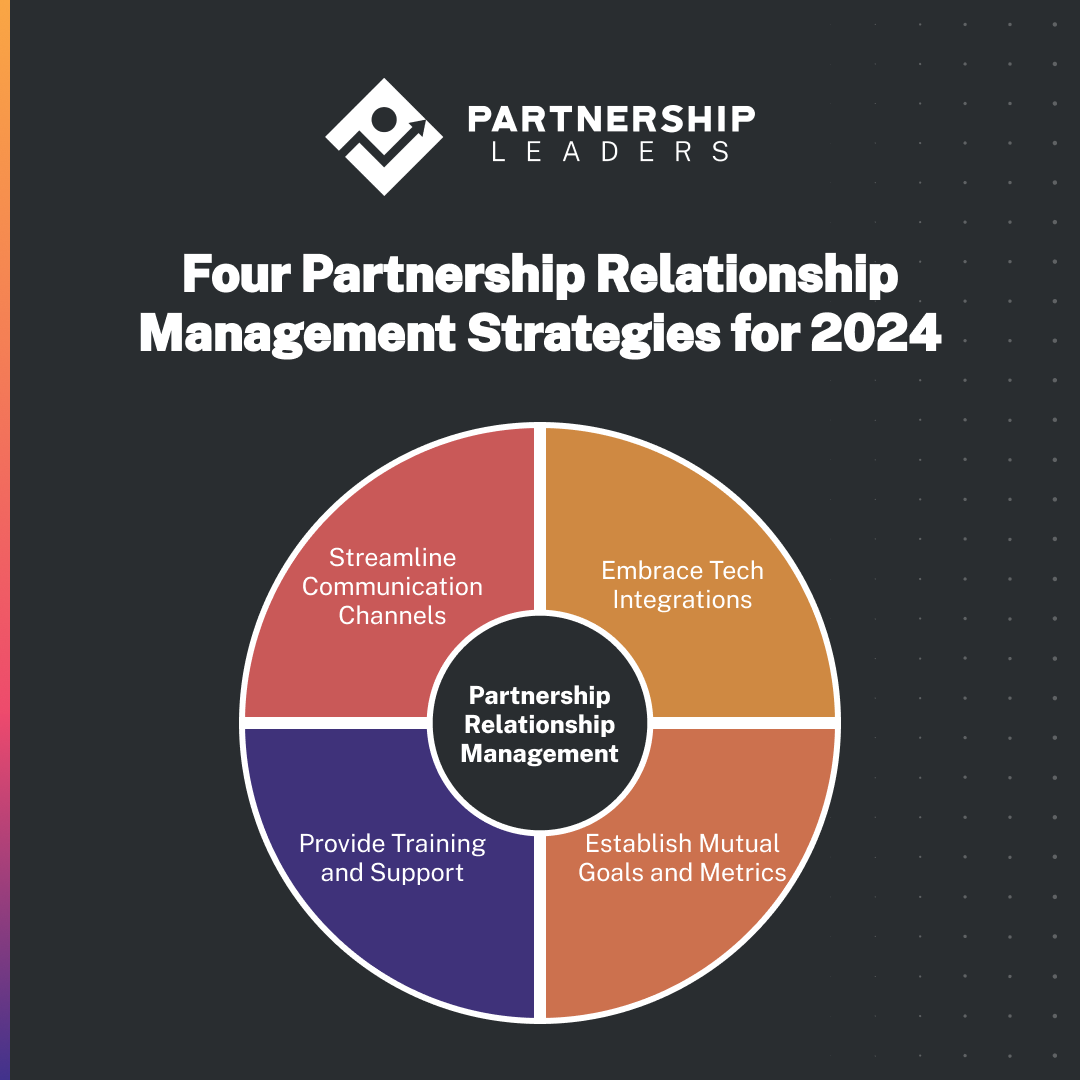With partner ecosystems becoming increasingly complex, planning ahead is crucial. An effective partnership relationship management strategy can be the difference between thriving and merely surviving in the market.
So, what can you do to prepare for next year’s partnerships? We’ll dive into five strategies that can unlock the full potential of your ecosystem.

1. Streamline Your Communication Channels
Let’s start with the linchpin of partnership relationship management: communication. Forging strong connections with your partners begins with clear, consistent dialogue. Here are four channels that can significantly enhance the way you communicate with your partners in 2024:
- Centralized Communication Platforms: Use tools like Slack or Microsoft Teams to consolidate conversations, ensuring quick and organized communication.
- Dedicated Partner Portals: Implement portals where partners can find resources, updates, and support in one place.
- Regular Video Conferences: Schedule periodic Zoom or Teams meetings to maintain a personal touch and foster stronger relationships.
- Automated Updates and Newsletters: Utilize email automation to keep partners informed about the latest product updates, company news, and industry insights.
Employing these channels can transform your communications from scattered to synchronized, setting a solid foundation for your partnership relationship management efforts.
2. Embrace Tech Integrations
After enhancing communication, integrating the right technology into your partnership ecosystem is the next step. Synergy is what elevates your partnership relationship management to new heights.
Consider these tech integrations:
- Customer Relationship Management (CRM) Systems: Centralize partner data to provide a single source of truth for interactions, transactions, and progress tracking.
- Partner Relationship Management (PRM) Platforms: Tailor-made to manage partner relationships, these platforms offer a specialized approach to handling partner pipelines and collaborations.
- Enterprise Resource Planning (ERP) Solutions: Streamline business processes and provide a comprehensive view of the operational side of your partnerships.
- Marketing Automation Tools: Enable partners with the ability to run co-marketing campaigns efficiently, ensuring brand consistency and reach.
The strategic integration of these technologies not only optimizes your operations but also ensures that you can focus on what matters most – building and maintaining solid and productive partnerships. The companies that master this integration will lead the pack in partnership relationship management.
3. Establish Mutual Goals and Metrics
Your tech stack isn’t the only thing that needs alignment – you must also synchronize your objectives and metrics.
Metrics are the lifeblood of this process. They provide the data and insights needed to make informed decisions, allowing both parties to pivot and adapt strategies in real-time. These performance indicators must be relevant, agreed upon, and regularly reviewed to ensure they accurately reflect the health and direction of the partnership.
What does success look like in one year or in five? How will market changes influence the partnership’s objectives? And crucially, how can both parties evolve together to meet the demands of an ever-changing tech landscape?
4. Provide Training and Support
Another way to support your partners is through enablement and training. While each ecosystem has a different set of tools to make this happen, there are five most common ways to do this:
- Regular Training Webinars: Conduct live online sessions to update partners on product changes, market trends, and sales techniques. This helps maintain a knowledgeable and agile partner network.
- Self-Service Learning Portals: Offer partners 24/7 access to training materials, enabling them to learn at their own pace and convenience. It’s an efficient way to scale learning across different time zones and schedules.
- Certification Programs: Establish a certification process to incentivize partners to complete training modules. Certified partners tend to be more invested and demonstrate a higher level of commitment and product understanding.
- Hands-On Workshops: Organize in-person or virtual workshops that allow partners to practice with the products and services in a controlled environment. This can lead to deeper engagement and a better grasp of complex features.
- Feedback-Driven Content Updates: Use partner feedback to regularly update training materials, ensuring they are relevant, address common challenges, and improve partners’ ability to sell or support your products effectively.
These practices not only empower partners but also ensure they are aligned with your company’s values and goals, creating a strong and proficient network that is primed for success.
Conclusion
While not a one-size-fits-all solution, creating an effective partner program requires investment in resources and personnel. Empowering partners with the right tools and training will help them build customer loyalty and increase product adoption. These four key elements – clear goals, well-defined roles, resources, and training – are essential if you are striving to establish an effective partner program.
Join The 1850+ Leaders Transforming Partnerships
As a member of Partnership Leaders you will:
- Build and learn with the top partner people at the best companies around the world.
- Increase your impact and accelerate your career with proven resources, tools, and best practices.
- Grow a network of peers, partners, and advisors with common objectives.


